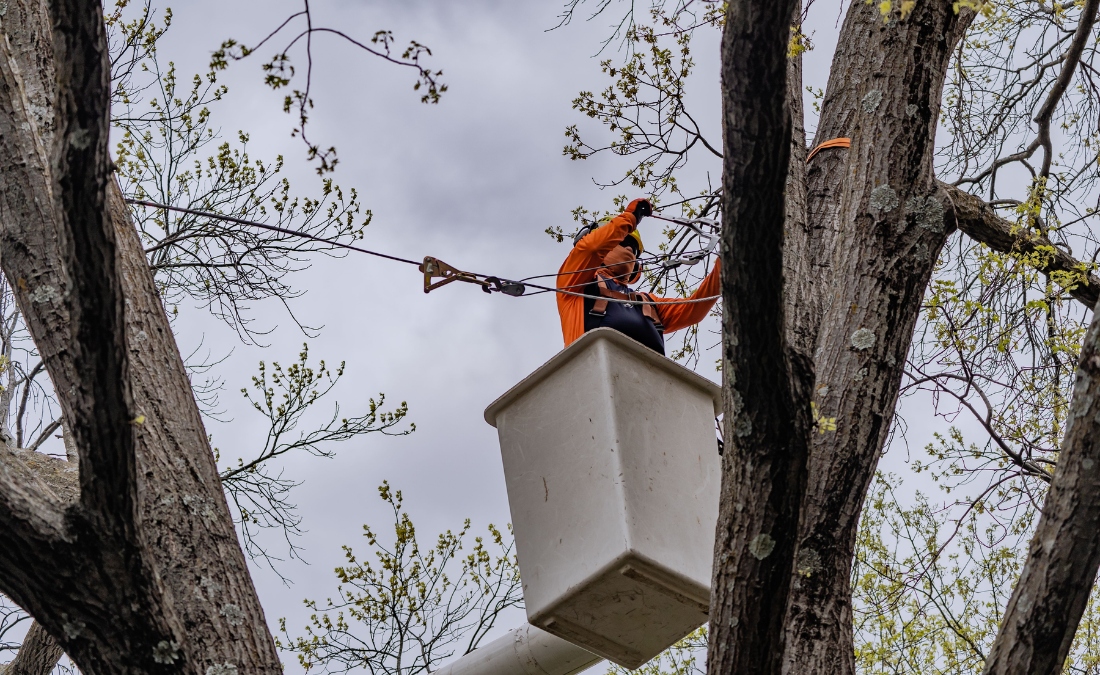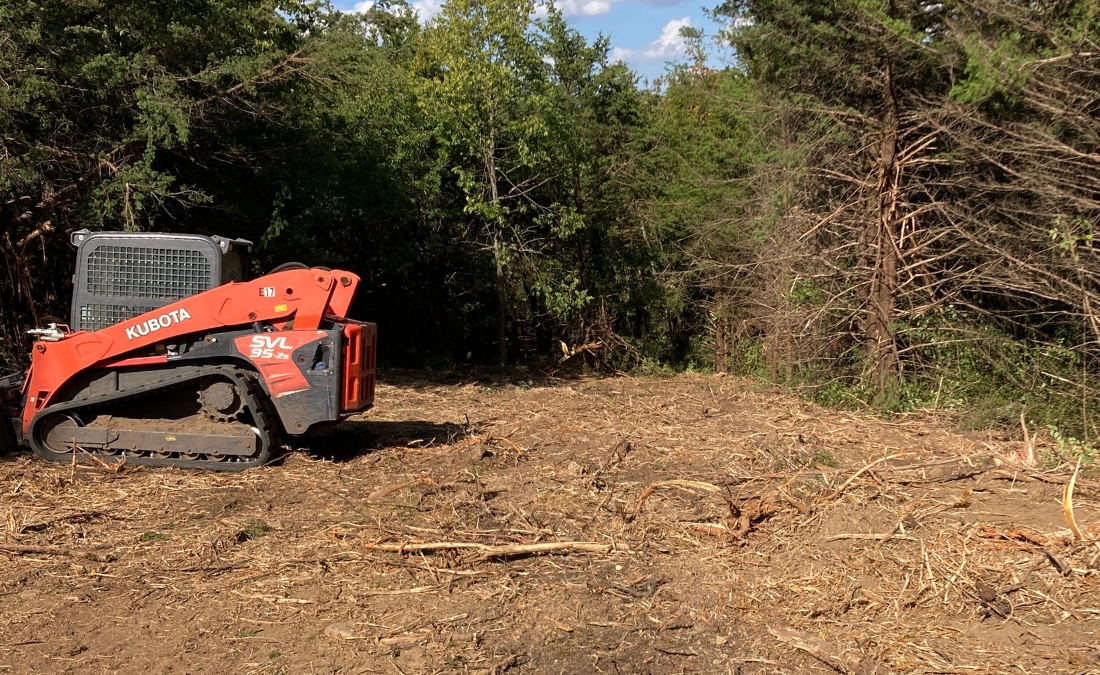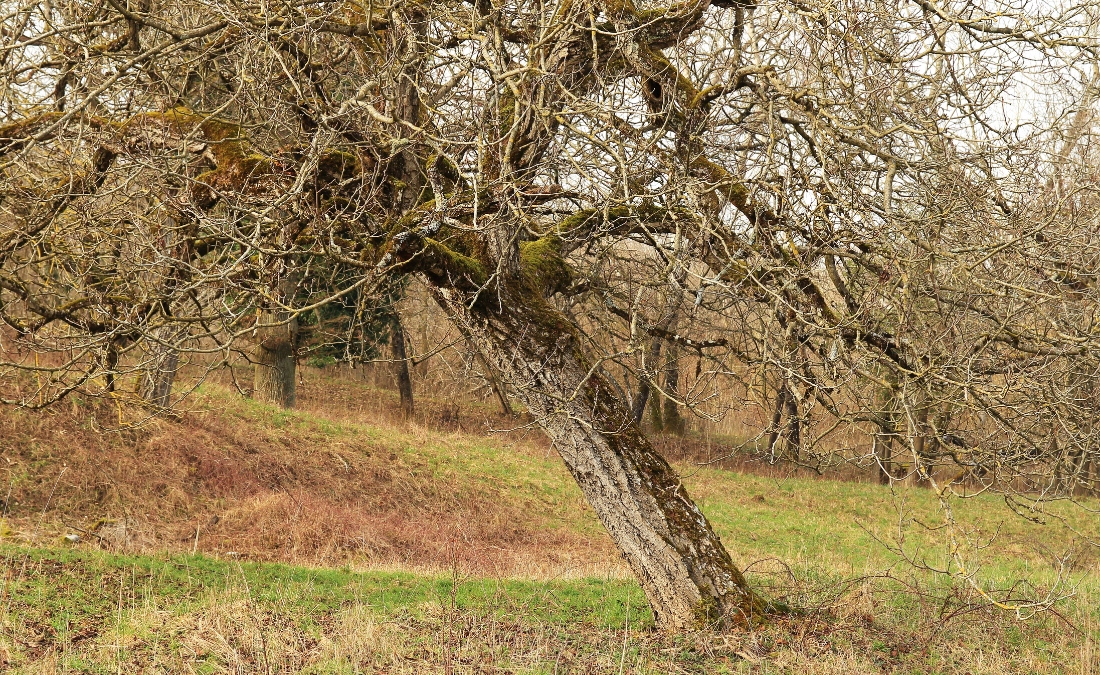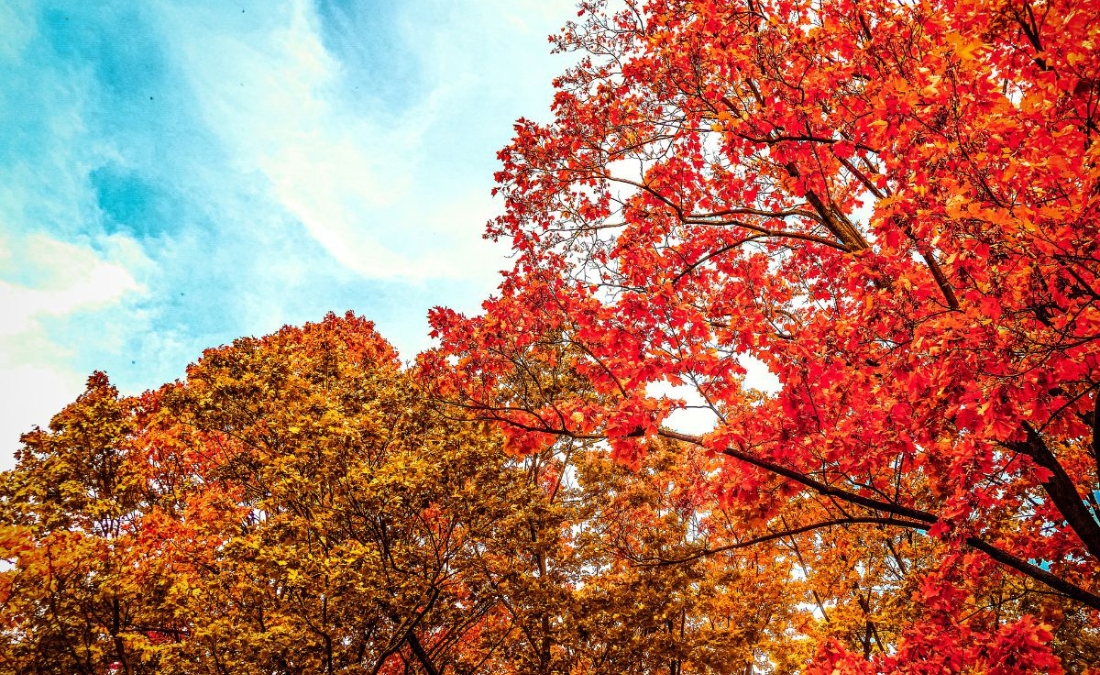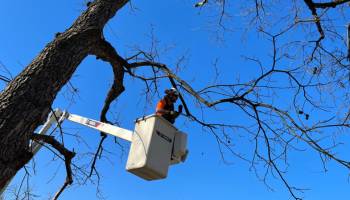Fall Tree Planting in Tulsa: Why Smart Homeowners Consult Arborists Before and After DIY Projects
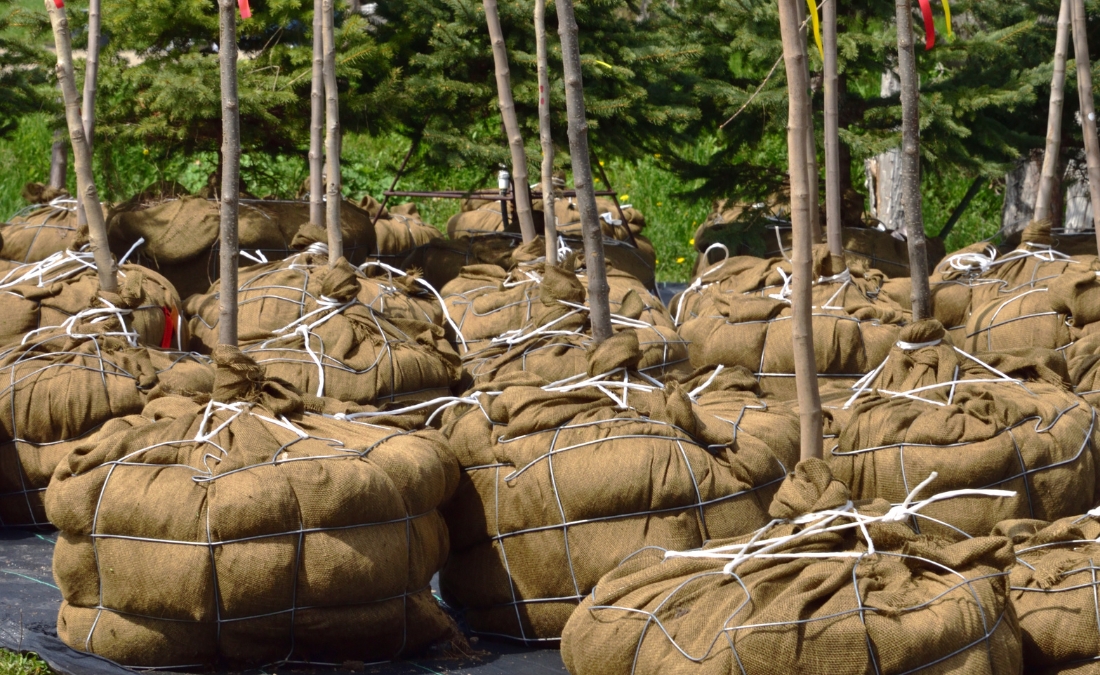
Smart Tulsa homeowners consult certified arborists before fall tree planting. Get expert species selection, site planning & aftercare for long-term success in new developments.
If you live in one of Tulsa’s newer developments, like Woodland Valley, Morrow Place, or the Boardwalk area near Addison Creek, you’ve probably noticed something missing from your neighborhood landscape: mature trees. While your contemporary home and manicured yard look great, the sparse canopy leaves you yearning for the shade and beauty that established trees provide. Fall presents the perfect opportunity to make that happen.
The challenge isn’t whether you can physically plant a tree yourself – many motivated homeowners absolutely can. The real question is whether you’ll choose the right species for Tulsa’s Zone 7a climate, properly evaluate your clay soil and utility constraints, and provide the specialized care needed during the critical first three years. That’s where professional consultation makes the difference between a thriving investment and an expensive mistake.
Key Takeaways
- ISA Certified Arborists know which trees thrive in Tulsa’s variable weather patterns and clay soil conditions, avoiding species that struggle or fail in Oklahoma’s climate.
- Expert site assessment identifies utility line conflicts, drainage issues, and mature tree size considerations before you invest in planting.
- Professional guidance on soil preparation, drainage solutions, and planting depth prevents the root problems that kill trees in Oklahoma’s challenging soils.
- Professional monitoring and maintenance during the 2-3 year establishment period ensures long-term health and maximizes property value enhancement.
- Certified Arborists understand City of Tulsa permit requirements, right-of-way restrictions, and utility clearance guidelines.
- Professional consultation ensures proper planting windows and establishment care that leverages Oklahoma’s climate patterns.
Fall is Prime Planting Season in Tulsa – Here’s Why
Fall planting takes advantage of Oklahoma’s climate patterns to give trees the best possible start. As Oklahoma State University Extension research confirms, early fall planting allows trees to establish root systems during cool, moist weather before facing the stress of their first Oklahoma summer.
The dormant season planting window – from late October through early March – minimizes transplant shock and allows energy to focus on root development rather than supporting leaves. This head start is crucial for survival in our challenging clay soils and variable weather patterns.
Professional consultation ensures you plant within the optimal window for your specific tree species and local microclimate conditions.
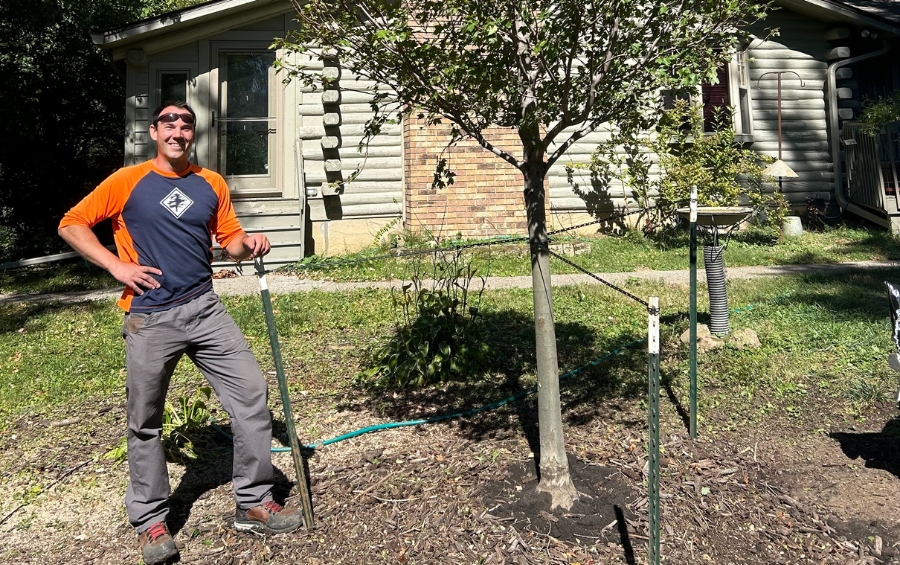
Professional consultation helps homeowners avoid costly mistakes in species selection and site planning for Tulsa’s challenging conditions.
Why New Tulsa Neighborhoods Need Professional Tree Planting Guidance
Drive through any of Tulsa’s established neighborhoods, like Brookside, Midtown, or the Brady Arts District, and you’ll immediately notice the difference mature trees make. These areas boast canopies that provide natural cooling, reduce energy costs, and create the kind of neighborhood character that new developments simply can’t match – yet.
The reality is that most new residential developments in areas like Woodland Valley, Morrow Place, and the Enclave at Addison Creek were designed with minimal tree preservation and basic developer landscaping. While you might have a few small ornamentals, like crape myrtles or redbuds, there’s tremendous opportunity to add the large shade trees that will transform your neighborhood over the coming decades.
But successful tree planting here isn’t as simple as digging a hole and dropping in a sapling. Tulsa homeowners face several challenges that make professional guidance essential:
-
Clay-Heavy Soils: Poor drainage and soil compaction quickly stress or kill young trees if not properly managed.
-
Underground Utilities: Gas, water, and sewer lines must be considered before planting to avoid costly or dangerous mistakes.
-
Overhead Power Lines: Planting the wrong tree in the wrong spot guarantees future conflicts with utilities.
-
City Requirements: Tulsa has specific rules for species selection and placement that many homeowners don’t realize until after they plant.
-
Species Adaptation: Trees that thrive in Kansas or Arkansas may struggle in Oklahoma’s unique climate and soil conditions.
Even the City of Tulsa turns to professionals. The recent median revitalization project with Up With Trees shows that proper species selection and planting techniques are critical – and that even municipal crews rely on expert arborists to get it right.
Pre-Planting Consultation: Setting Your Trees Up for Success
Professional consultation before you break ground can save you thousands of dollars and years of frustration. Here’s what Certified Arborists evaluate to ensure your fall planting project succeeds:
Zone 7a Species Selection for Tulsa’s Climate
Tulsa sits in USDA Hardiness Zone 7a, which means we experience minimum winter temperatures between 0°F and 5°F. However, hardiness zones only tell part of the story. Our variable weather patterns, including sudden temperature swings, ice storms, and intense summer heat, require trees that can handle more than just cold tolerance.
Oklahoma Proven selections, like the caddo sugar maple, bur oak, and Oklahoma redbud, have been specifically tested for our region’s challenges. A Certified Arborist can guide you toward species that will thrive in your specific microclimate while avoiding fast-growing but weak-wooded varieties that create future hazards.
Site Evaluation for Clay Soil and Drainage
Oklahoma’s clay soils are notorious for poor drainage and compaction issues. Most tree failures in new developments stem from planting techniques that work in loamy soils but fail in clay. A professional site evaluation identifies drainage patterns, soil compaction levels, and areas where soil amendments or raised planting might be necessary.
Your arborist will also assess sun exposure throughout the day, existing irrigation capabilities, and how seasonal water flow affects different areas of your property. This analysis prevents the common mistake of choosing water-loving species for dry areas or drought-tolerant trees for locations that stay consistently moist.
Utility Line Planning and City Compliance
One of the most expensive mistakes homeowners make is planting trees that will eventually conflict with overhead power lines or underground utilities. The City of Tulsa requires specific clearances and may require permits for trees planted in right-of-way areas.
Professional consultation includes calling 811 for utility locates, understanding PSO’s power line clearance requirements, and planning for mature tree size. This foresight prevents the heartbreak of having to remove a beloved tree years later when it threatens utility infrastructure.
Long-term Landscape Vision Development
Effective tree planting considers how your landscape will evolve over 10-20 years. Professional consultation helps you visualize mature tree spacing, shade patterns, and how new trees will complement existing landscaping. This long-term thinking ensures your investment enhances rather than overwhelms your property.
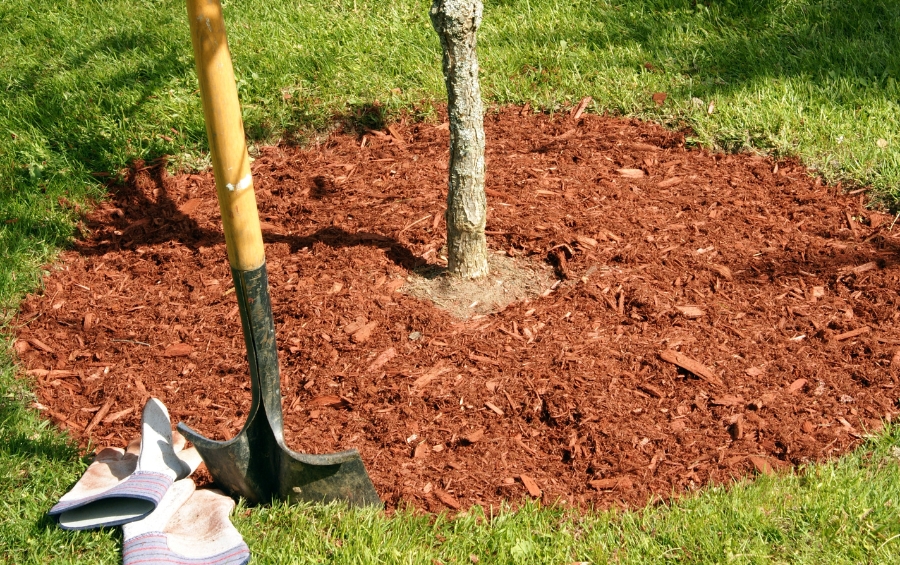
Proper mulching and planting depth are crucial for tree survival in Oklahoma’s challenging clay soils.
The Critical First Three Years: Professional Aftercare That Protects Your Investment
Even perfectly planted trees can fail without proper care during establishment. The first three years determine whether your tree investment will thrive for decades or struggle with chronic health issues.
Establishment Period Monitoring
Critical insight: The difference between a $300 tree that dies in year two and a $300 tree that adds thousands in property value over 20 years often comes down to professional monitoring during the critical establishment period.
Newly planted trees face numerous stresses as they establish root systems in their new location. Professional monitoring during this period catches problems early when they’re still correctable. Signs like leaf scorch, premature fall color, or stunted growth often indicate underlying issues that homeowners might not recognize until it’s too late.
Regular ISA Certified Arborist inspections during the establishment period ensure your trees are adapting successfully and receiving appropriate care for Oklahoma’s challenging growing conditions.
Proper Pruning During Early Growth
Young trees require specialized pruning to develop strong structure and prevent future problems. This isn’t the same as mature tree pruning – it’s about training the tree’s growth pattern and removing competing leaders before they create weak branch attachments.
Professional structural pruning during the establishment period is much more cost-effective than corrective work later. It also ensures your trees develop the strong, balanced canopy that will withstand Oklahoma’s severe weather patterns.
Pest and Disease Prevention
Oklahoma trees face specific pest and disease pressures that vary seasonally. Professional care programs include preventive treatments timed to local conditions and monitoring for early signs of problems, like bagworms, scale insects, or fungal diseases, that commonly affect newly planted trees.
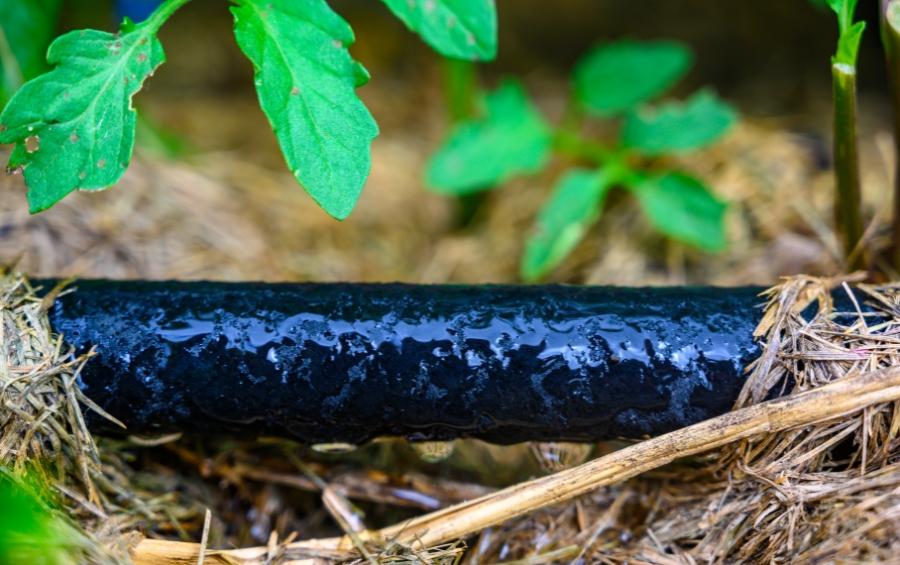
Professional irrigation guidance ensures newly planted trees receive optimal water management during Oklahoma’s variable weather patterns.
Irrigation Guidance for Oklahoma Weather
Watering newly planted trees sounds straightforward, but Oklahoma’s variable weather patterns make it surprisingly complex. Professional guidance helps you adjust irrigation based on seasonal rainfall, soil moisture levels, and individual tree needs rather than following generic watering schedules that might over- or under-water your investment.
Understanding how trees respond to heat stress during Oklahoma’s intense summers is particularly important for newly planted specimens that haven’t yet developed extensive root systems.
Trees We Recommend You Plant in Tulsa
The right tree species can make the difference between decades of enjoyment and years of problems. Here are the top recommendations for Tulsa’s new developments:
Large Shade Trees:
- Bur Oak (Quercus macrocarpa): Extremely long-lived native that tolerates clay soils and produces important wildlife food. Reaches 60+ feet with an even larger spread.
- Caddo Sugar Maple (Acer saccharum ‘Caddo’): Oklahoma-selected variety that handles our heat and alkaline soils better than eastern sugar maples. Provides brilliant fall color.
Medium-Sized Options:
- Oklahoma Redbud (Cercis canadensis var. texensis ‘Oklahoma’): Our state tree, perfectly adapted to local conditions with beautiful spring flowers and heart-shaped leaves.
- Western Soapberry (Sapindus saponaria var. drummondii): Tough native with attractive bark and excellent drought tolerance once established.
Specialty Selections:
- Bald Cypress (Taxodium distichum): Unusual deciduous conifer that handles both wet and dry conditions. Creates a unique texture in the landscape.
Oklahoma State University Extension provides comprehensive lists of recommended species, but professional consultation helps you select the specific variety and placement that will work best for your property’s unique conditions.
Species to Avoid in New Developments:
Fast-growing varieties like Silver Maple, Tree of Heaven, or Bradford Pear might seem appealing for quick results, but they create long-term problems with weak wood, invasive growth, or pest susceptibility.
Frequently Asked Questions
What’s the best timing for fall tree planting in Tulsa?
The optimal window is from late October through December, after trees have entered dormancy but before the ground freezes. This timing allows root establishment during cool weather while avoiding transplant shock from hot temperatures.
How do I know if my clay soil needs amendments before planting?
Professional soil testing reveals pH levels, drainage characteristics, and compaction issues. Most Tulsa clay soils benefit from organic matter incorporation and proper drainage solutions, but the specific amendments depend on your site’s unique conditions.
Do I need permits for planting trees in my yard?
Generally, no permits are required for planting on private property, but you may need permits for trees in city right-of-way areas (typically the first 12 feet from the street curb). Professional consultation includes permit guidance and utility clearance requirements.
How long does it take for newly planted trees to establish in Oklahoma?
Most trees require 2-3 years to fully establish in Oklahoma’s challenging conditions. Professional aftercare during this period significantly improves survival rates and long-term health.
What ongoing care do trees need after planting?
Professional aftercare includes establishment period monitoring, structural pruning, pest and disease prevention, and irrigation guidance tailored to Oklahoma’s variable weather patterns. This care protects your investment and ensures long-term success.
Partner with Tulsa’s Tree Care Experts for Your Fall Planting Success
Your vision of a beautifully tree-lined neighborhood in Woodland Valley, Morrow Place, or the Addison Creek area can become reality with the right professional guidance. At Arbor Masters, our ISA Certified Arborists bring over six decades of combined experience to help Tulsa homeowners make smart tree planting decisions that enhance property values and create lasting beauty.
Whether you’re planning to plant trees yourself or want comprehensive installation and aftercare services, our team provides the expert consultation and ongoing support that ensures your investment thrives for generations. Don’t let your tree planting project become another expensive mistake.
Contact Arbor Masters at 918-258-3444 or request your free consultation to discover how professional guidance can transform your property with healthy, beautiful trees.
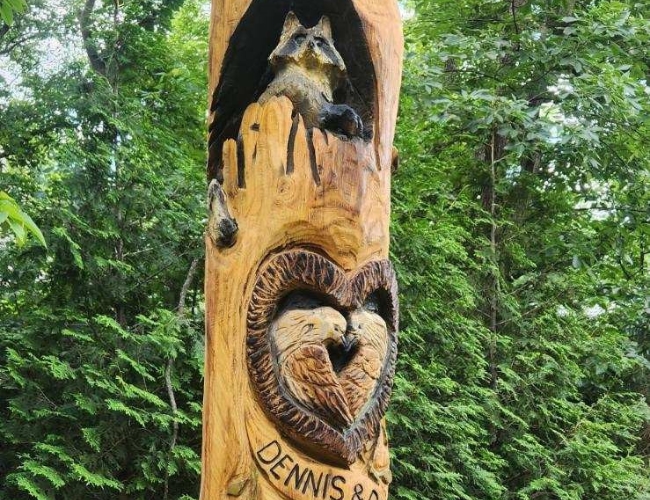
Get the latest local news, tree care tips, special offers, and company updates directly to your inbox! It's easy to subscribe and there's no spam - we promise.
"*" indicates required fields

